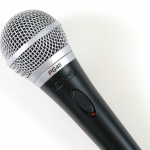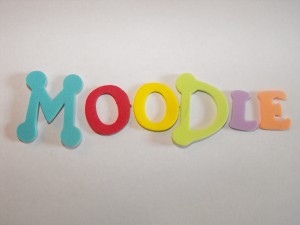ETEC 565 Selection
Author: Michele Brannon-HamiltonETEC 565 Selection and Design
ETEC 565 covered the design and selection of educational technology and was based on constructivist principles. In this course we learned how to evaluate and choose the tools and learning environments that would be most conducive to learning. We were presented with several frameworks to assist us with our decisions and given hands-on opportunities to try the technology. For example, we learned that Chickering and Gamson (1987) created a set of principles which outlined good teaching practice. It included active learning, providing feedback and respecting diversity. With the advent of technology, Chickering and Ehrmann (1996) adapted this framework to help instructors determine how to use technology when teaching. Bates and Poole (2003) reminded us to look beyond the technology to components such as cost, ease of use and interactivity.
As in many of these courses, we began with introductions. However, this course took me out of my comfort zone into the world of audio introductions. It was interesting recording myself and listening to other students. In one of my other courses, we uploaded photos. I found it interesting trying to match the voices to the faces to the profiles. I often wonder how interactions change when culture, age and gender are not as apparent as in face to face classes.
One of our assignments included choosing a learning management system (LMS) and creating a lesson in it. I chose Moodle because I had some familiarity with it, it was free and I would be able to use it in the literacy community. Next, we wrote an LMS proposal for our e-portfolios using a proposal format that was relevant to our jobs.
I found the references in this course so useful that they became the basis for all my other courses. In particular, I used Chickering & Gamson, Chickering & Ehrmann and, Bates & Poole. Links to these references can be found below.
As we progressed through this course, we evaluated communication tools, collaboration tools and various types of multimedia. Part of our investigation included writing reflections and posting them to a personal blog. I found this course was good practice for the ePortfolio in 590 so I tried to continue writing in my blog beyond this course. However, I often found it hard to keep up with the expected weekly blogs; therefore, my submissions become more intermittent. Beyond this course, it will be important to maintain my blog because I’m a freelance writer who specializes in web writing.
I chose my blog as an artifact because it presents both my knowledge of educational technology and my writing ability. Also, each section of the blog represents a module in our course. I’m including the link to my Flight Path because it symbolizes the start of my journey in ETEC 565 and my quest throughout MET.
Flight Path and Blog
My favourite assignment in this course was creating a digital story for my blog. I used photos from my recent trip to England and an online slide share program called PhotoPeach to create a nostalgic journey. With this assignment, I was able to use my creativity while learning how to create a slide show with music I could embed into my blog.
Why I love England on PhotoPeach
Please enjoy my video of England. If you have any trouble viewing the slide show with sound, please click directly on the middle of the video picture a second time and it will take you to the original on photopeach.com which has sound. I chose the song Landing in London which compliments the slide show. Enjoy!
To assist with our own design and construction, we were presented with an array of activities in a toolkit. Weekly discussions about the LMS and the toolkit activities allowed us to collaborate and problem solve together. We learned the difference between synchronous and asynchronous communication and analyzed the advantages and disadvantages of each. Advantages include creating a sense of community, anytime anywhere communication, introverts participating more, and people having time to think before replying. Disadvantages include communicating without facial cues and a lack of access for some students. Communication tools include chats, forums, conferences, email and blogs. After trying each tool, we reflected on them in our blogs.
Assessment tools were also in our toolkit including assignments, quizzes, concept maps and blogs. Many things can be used to assess learning, both summatively and formatively. In discussions, we analyzed teacher, peer, and self-assessment. I learned how assessment relates to motivation and realized that I need to know what I want to be assessing before I assess.
Next, we explored how social media allows us to connect with others. Some of the media was new to me including delicious, and wikis. I also learned how blogs and Facebook could be used to communicate, interact and collaborate with others. Our instructor gave us examples of where and how these tools have been used in various MET courses.
A general understanding in this course centred around the belief that students today may want to learn differently than students in the past. We were introduced us to the video A Vision of Students Today which suggests students want to be more engaged than how they being taught now. I found this was a very powerful video that I have viewed many times.
A Vision of Students Today
While discussing videos, we learned about mashups, remixes, multiple authorships and the creative commons. As a writer, I found this information particularly interesting and had several discussions around the issue of copyright and piracy. A post regarding copyright can be found on my blog.
Overall, I found this course very useful and I realize I can use the frameworks we learned to evaluate all types of educational technology. Near the end of the course, I created a multimedia inventory identifying each tool I used, its source, the cost and the copyright of each item. I will use all of this information in my own work; therefore, I kept a copy of all the toolkit technologies for future reference. I also plan to maintain my blog indefinitely.
Artifacts
References
Bates, A.W. & Poole, G. (2003). A Framework for Selecting and Using Technology, In A.w. Bates & G. Poole, Effective Teaching with Technology in Higher Education (pp.75-108). San Francisco: Jossey-Bass.
Chickering, A.W. & Gamson, Z.F. (1987). Seven Principles for Good Practice in Undergraduate Education. American Association for Higher Education Bulletin, 39(7), 3-7. Accessed online 11 Mar 2009 at http://www.aahea.org/bulletins/articles/sevenprinciples1987.htm
Chickering, A.W. & Ehrmann, S.C. (1996). Implementing the Seven Principles: Technology as Lever. American Association for Higher Education Bulletin, 49(2), 3-6. Access online 11 Mar 2009 at http://www.aahea.org/bulletins/articles/sevenprinciples.htm
National Educational Technology Standards for Teachers http://ww.iste.org/Content/NavigationMenu/NETS/ForTeachers/2008Standards/NETS_for_Teachers_2008.htm

